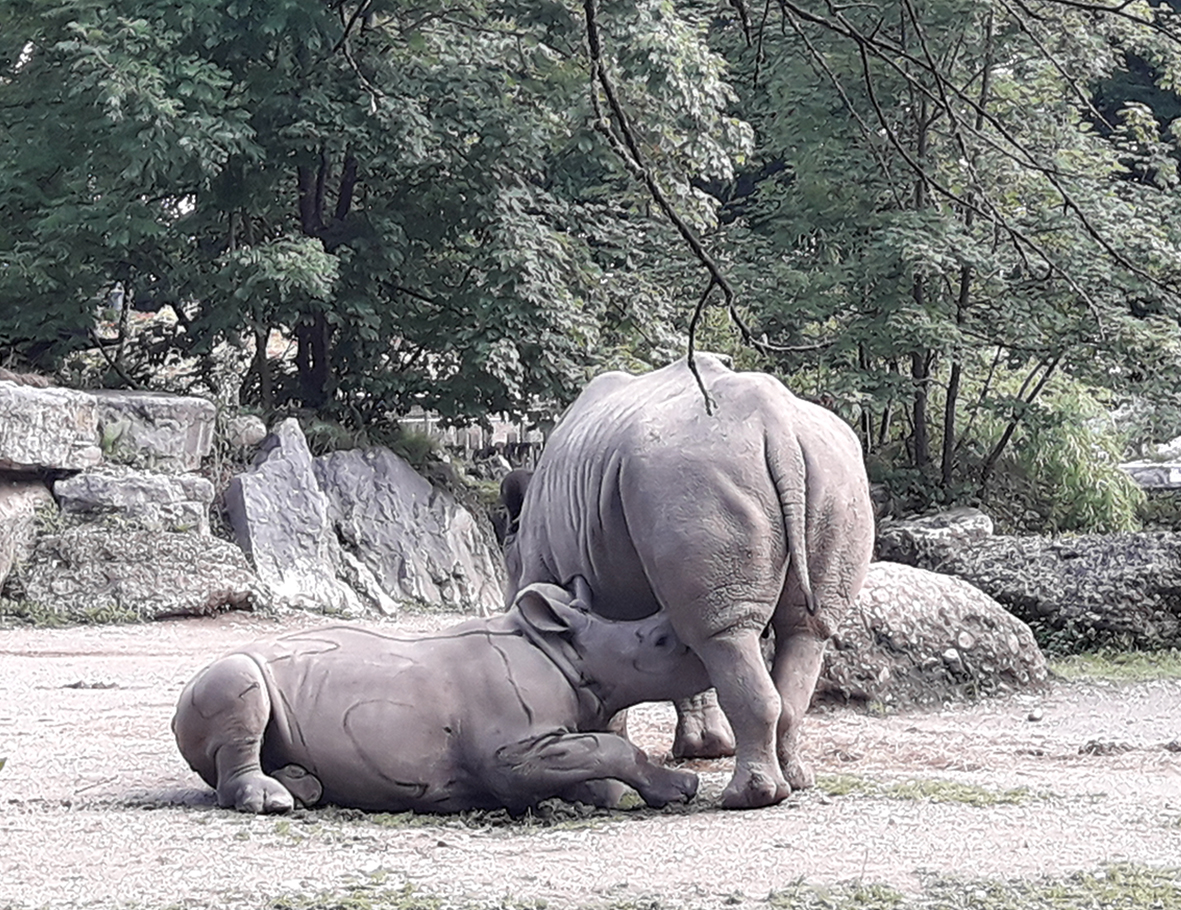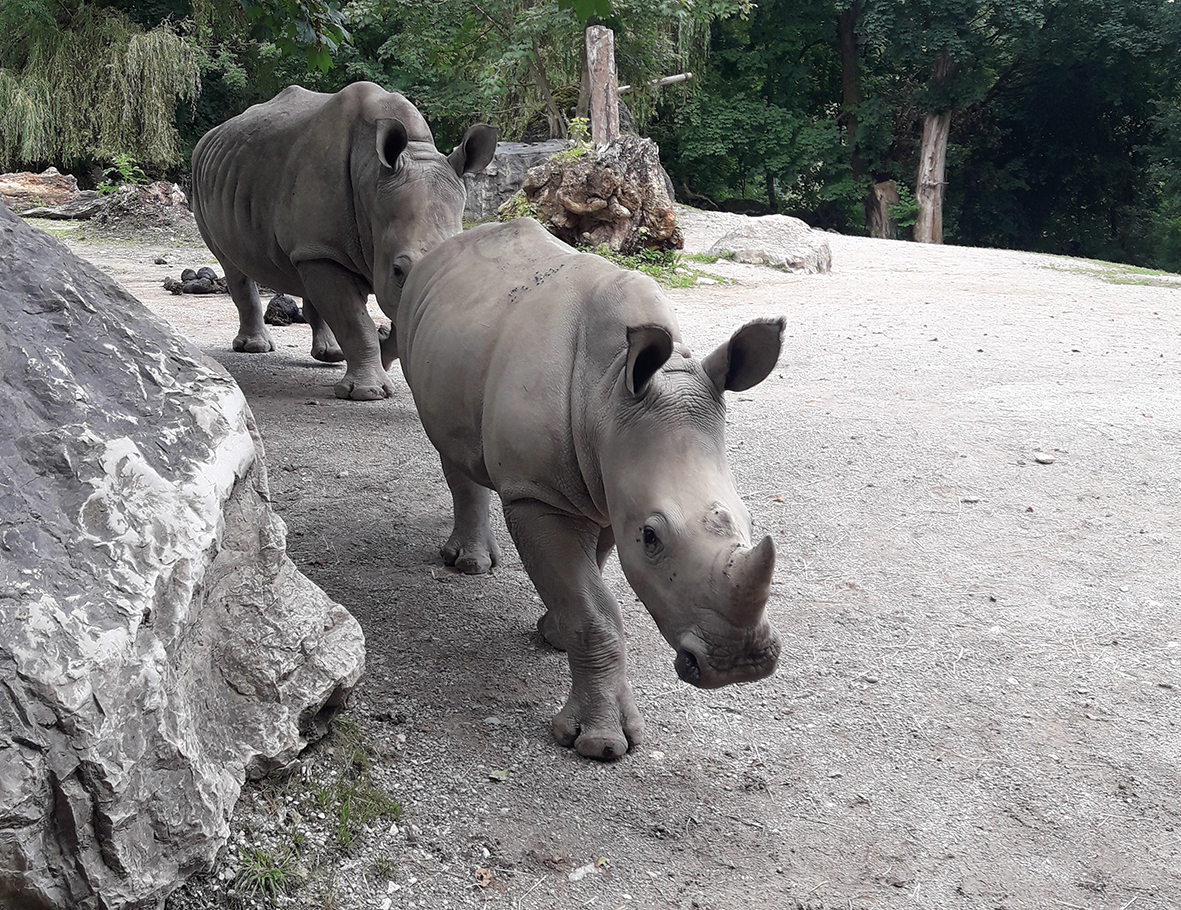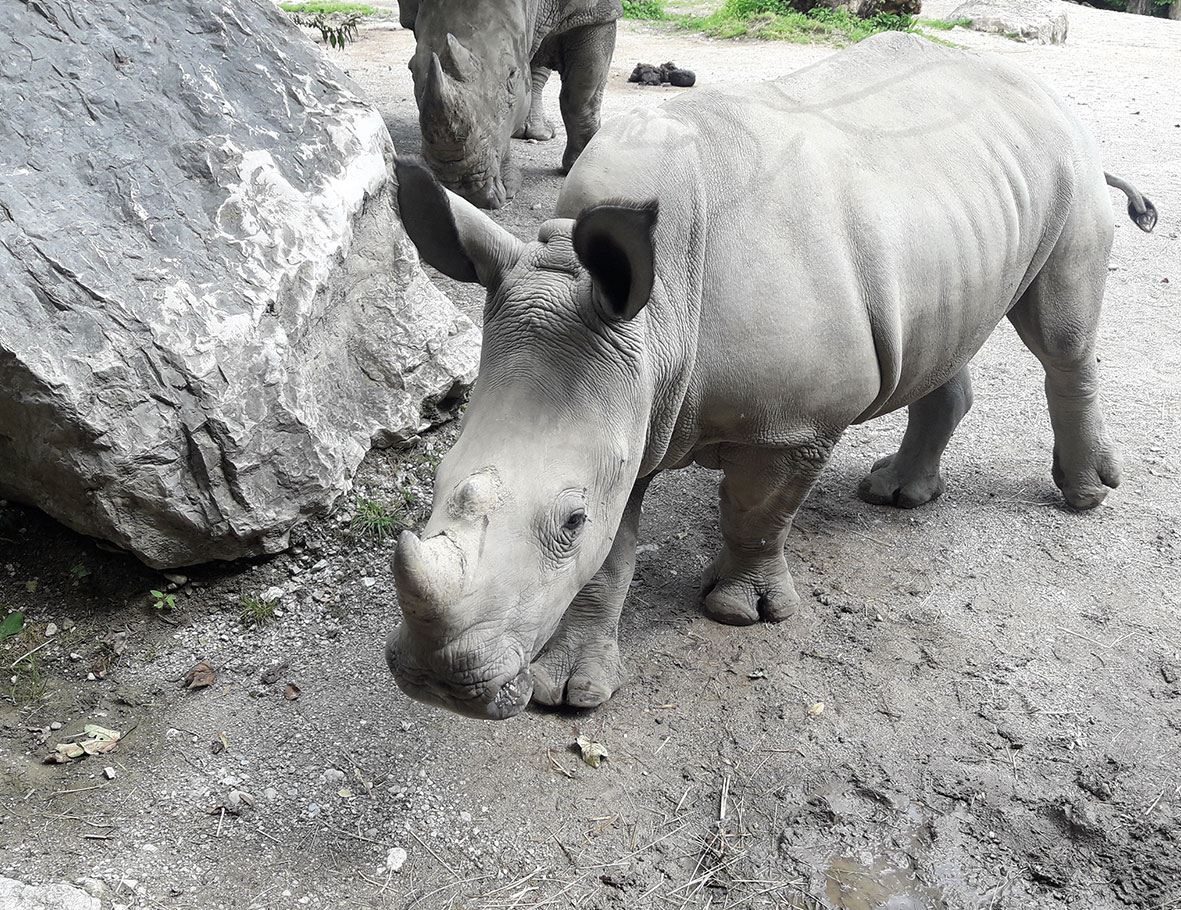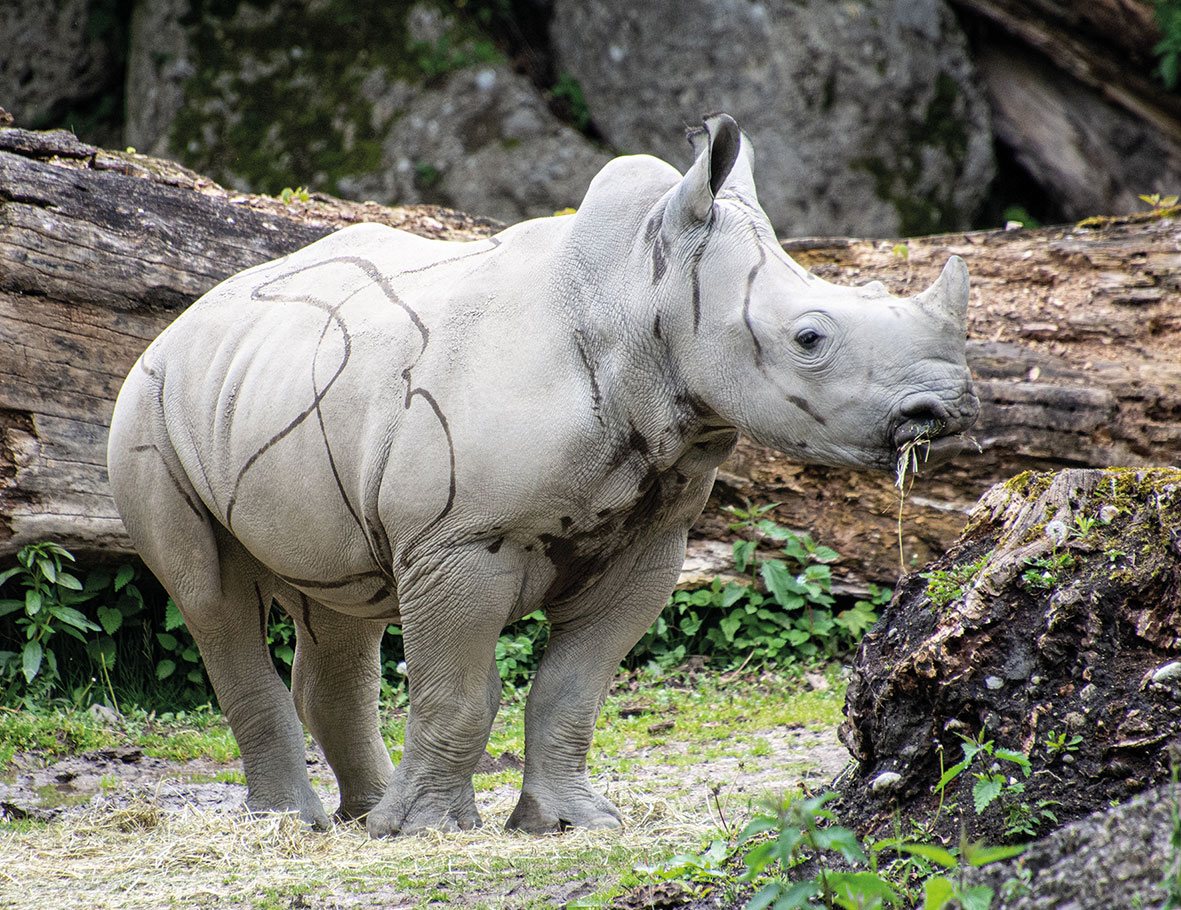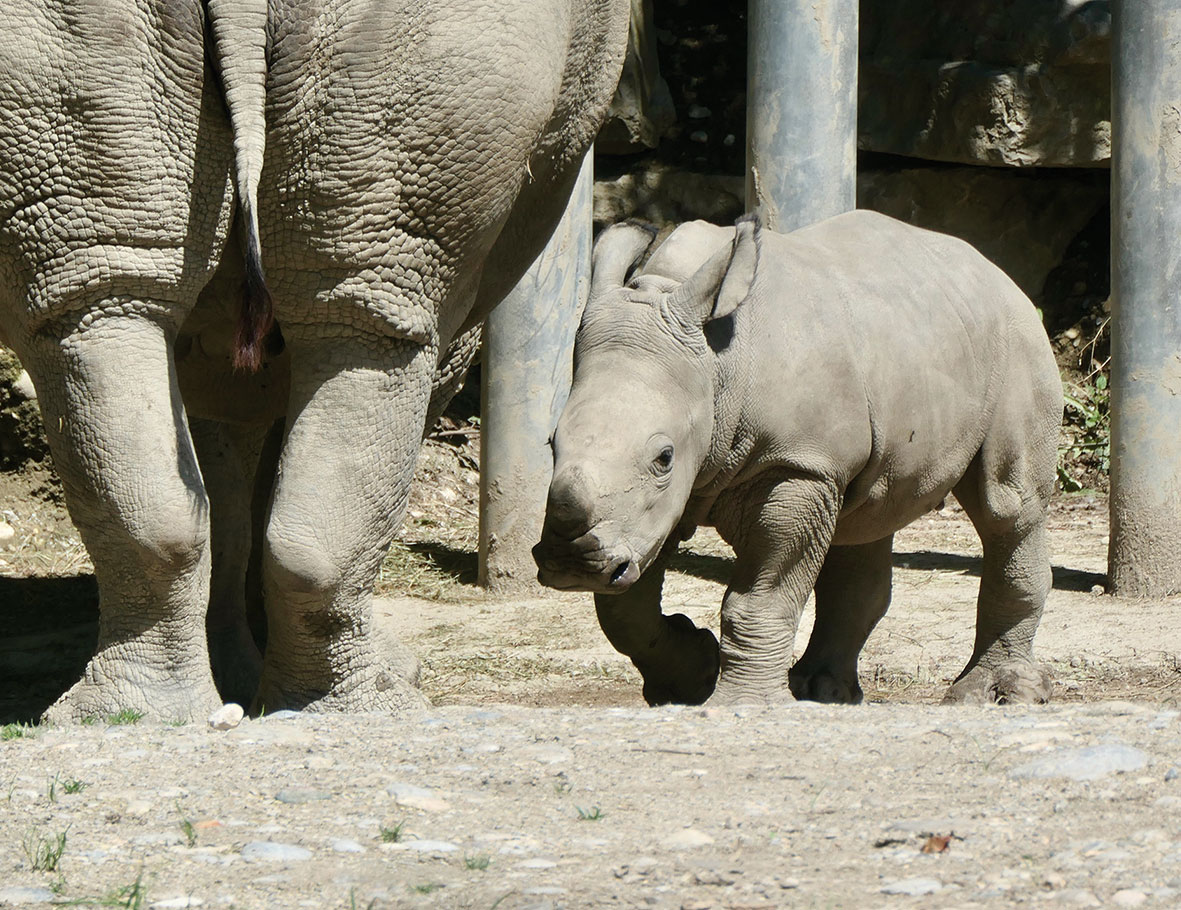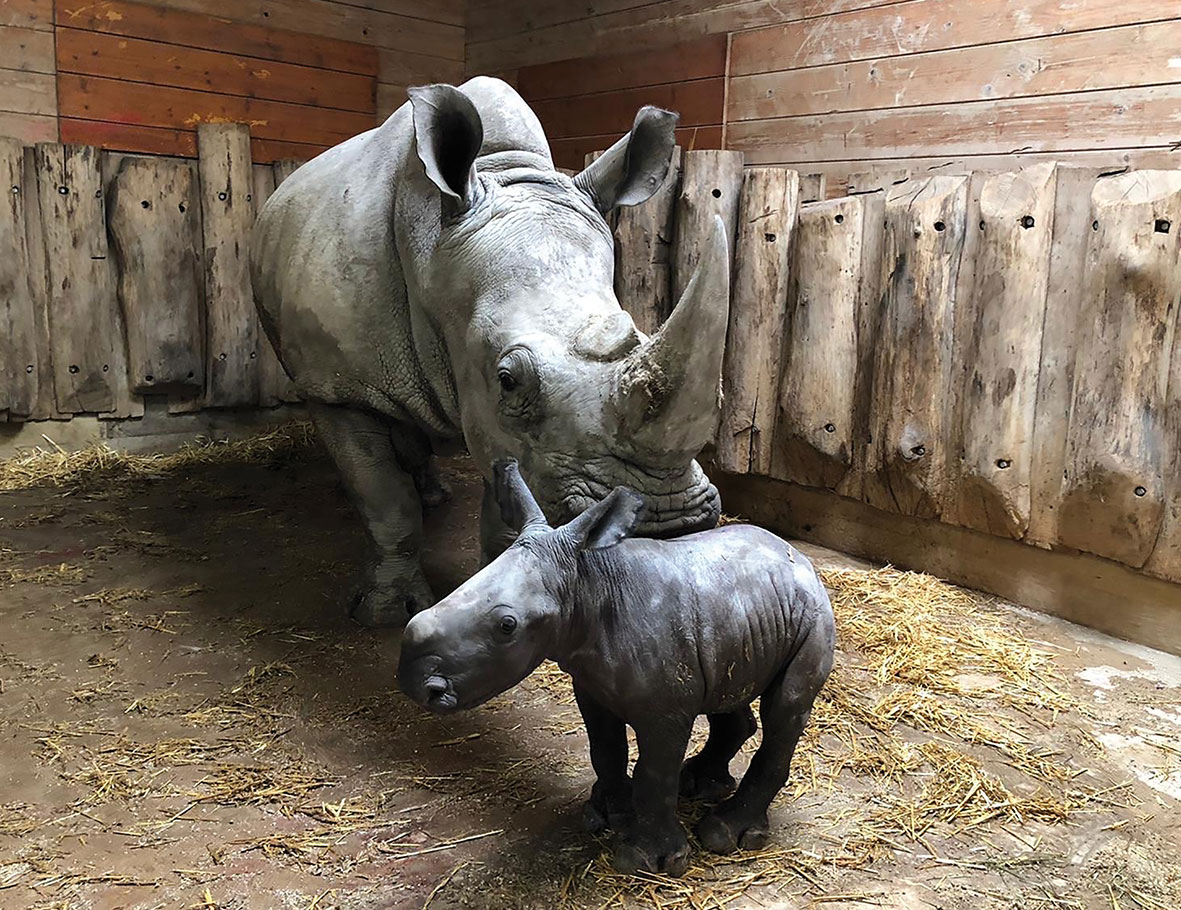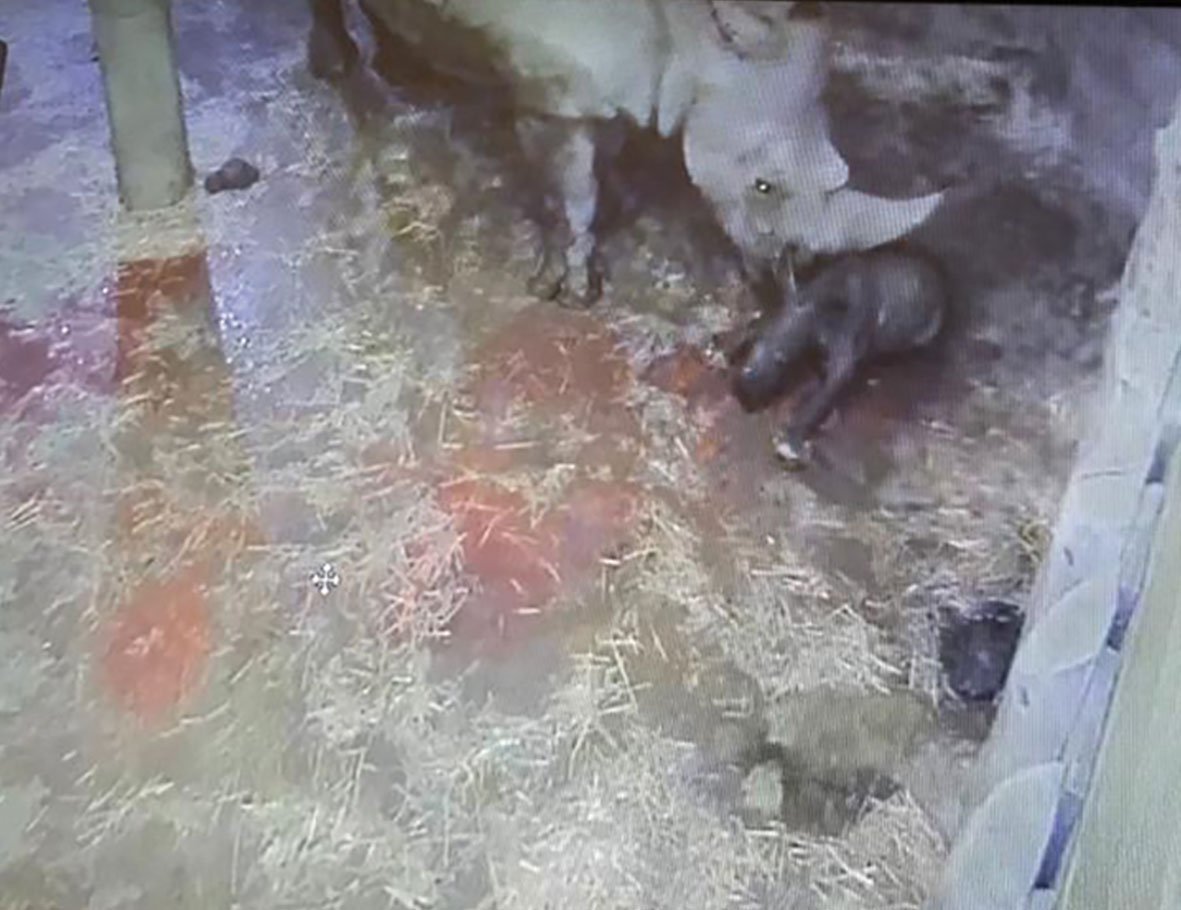Salzburg | Berlin | Africa
Rescuing Giants: It’s a Girl!
Almost no other mammal in the world is as acutely in danger of extinction as the rhinoceros. A healthy rhinoceros calf was recently born at the Salzburg Zoo – making it already the third offspring of this species, thanks to the invaluable help of the Academy and science: The result of a successful species protection and conservation breeding project.
The Academy could not imagine a more wondrous gift for its 10th birthday: In the early hours of June 3, 2020, the 14-year-old Northern white rhinoceros cow Tamu gave birth to a healthy calf – and a female at that.
“We are thrilled that after two boys, we have now welcomed a girl”, said Prof. Dr. Wiesner.
Tamu held the entire zoo staff and the Academy in suspense with the birth. The gestation period of rhinoceroses is approximately 485 to 520 days. Already on Whit Monday, it looked as if Tamu would give birth that night, but the little calf still needed one more night. “On June 3 at exactly 5:41 a.m., the baby rhinoceros saw the light of day after a gestation period of 503 days and was already standing on its own little legs after half an hour”, said director Sabine Grebner who, together with her team, watched the event on a monitor screen.
Cameras had been mounted in the rhinoceros enclosure about two weeks previously in order to provide Tamu with as much peace and quiet as possible and still be able to keep an eye on her. “Tamu did a fabulous job”, added zoo veterinarian Dr. Miriam Wiesner. “Everything went smoothly and without complications and it’s touching how the young mother is taking care of her baby.” The little girl even nursed for the first time just one hour after her birth. “That was such a relief and an uplifting moment for us”, said Dr. Miriam Wiesner, who volunteers in many ways for the Academy.
Just a few days later in summerlike temperatures, the little rhinoceros explored the outdoor area of its enclosure under the watchful eyes of its mother. The zoo and Dr. Miriam Wiesner recorded on video personal impressions of
the baby’s first journey into the fresh air and into its life. The videos can be seen on the Academy’s Facebook page. https://www.facebook.com/Schreiberling/posts/10220397798889529
Previous history: Even under the protected conditions of a zoo, it is extremely difficult to practice conservation breeding with a species like the rhinoceros. Just how difficult it is shows the story which began at the Salzburg Zoo in 2013. Thanks to his decades of experience as the zoo veterinarian and director of the Munich Hella-brunn Zoo, Prof. Dr. Henning Wiesner was asked at the time by the Salzburg Zoo director Sabine Grebner to lead the scientific, zoological and veterinary consultation in Salzburg. One of the issues was the lack of young among the zoo’s Southern white rhinos. The problem was that the bull Athos showed no interest whatsoever in his conspecifics.
Wiesner advised artificial insemination and cooperation with the internationally renowned Leibniz Institute for Zoo and Wild Animal Research (IZW) in Berlin, changed feeding and husbandry practices and prescribed special phytotherapy to stimulate the male and female gonads. With success: In this way the Salzburg Zoo got two calves which have developed wonderfully and are now expected to produce offspring in another zoo.
In December 2017, the rhinoceros cows, Yeti and Tamu, could be inseminated again, but in vain. The insemination with the sperm of the bull Athos was successful only on January 17, 2019. About one month later, an ultrasound examination conducted by the IZW showed that at least Tamu was pregnant.
Currently, five rhinoceros subspecies still exist. Here are the most recent statistics:There are approximately 18,000 white rhinoceroses worldwide and about 5,000 black rhinoceroses. Indian rhinoceroses are at never more than 2,575, Sumatran rhinoceroses are at 100 and the Java rhinoceroses never count more than 60 individuals.In Africa in particular, rhinoceroses are victims of poachers. Trade with rhinoceros horns has officially been illegal for nearly four decades. How-ever, because they are considered to possess healing and aphrodisiacal properties, especially in China and Vietnam, horrendous prices are still paid for the horns of these animals on the black market. For this reason, specific breeding programmes are in progress to protect the species in zoos like the Salzburg Zoo. The Frankfurt Zoological Society is involved in the protection and monitoring of the remaining animals of this species in the Serengeti in Tanzania. The Academy assists in this endeavor. The Academy also works with the NGO Kilimanjaro Animal C.R.E.W. |

